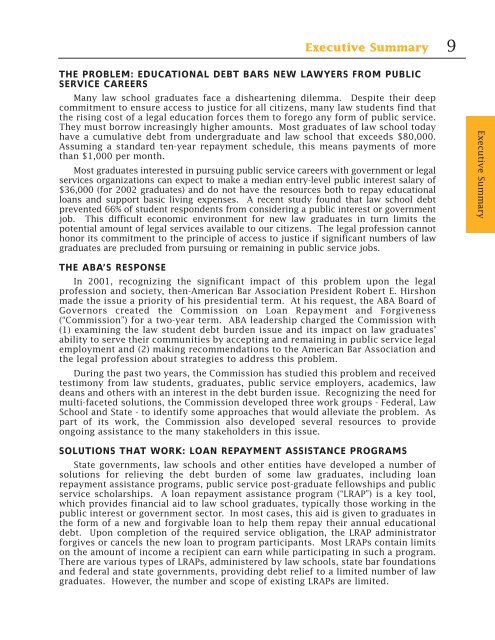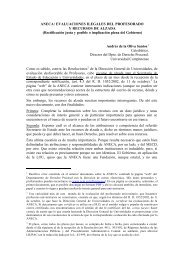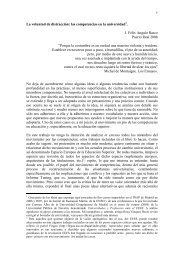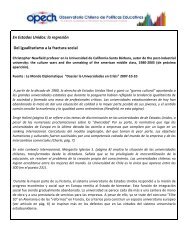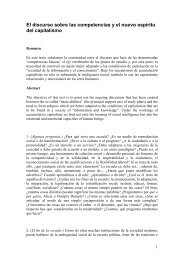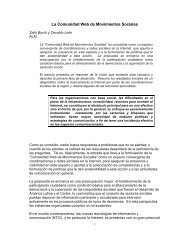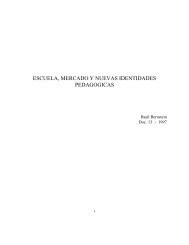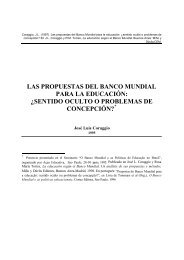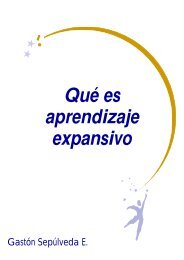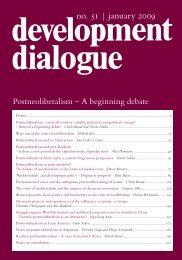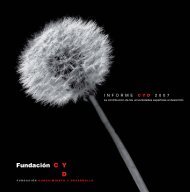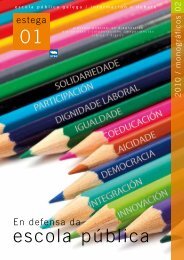Lifting the Burden: Law Student Debt as a Barrier to Public Service
Lifting the Burden: Law Student Debt as a Barrier to Public Service
Lifting the Burden: Law Student Debt as a Barrier to Public Service
Create successful ePaper yourself
Turn your PDF publications into a flip-book with our unique Google optimized e-Paper software.
Executive Summary9THE PROBLEM: EDUCATIONAL DEBT BARS NEW LAWYERS FROM PUBLICSERVICE CAREERSMany law school graduates face a disheartening dilemma. Despite <strong>the</strong>ir deepcommitment <strong>to</strong> ensure access <strong>to</strong> justice for all citizens, many law students find that<strong>the</strong> rising cost of a legal education forces <strong>the</strong>m <strong>to</strong> forego any form of public service.They must borrow incre<strong>as</strong>ingly higher amounts. Most graduates of law school <strong>to</strong>dayhave a cumulative debt from undergraduate and law school that exceeds $80,000.Assuming a standard ten-year repayment schedule, this means payments of morethan $1,000 per month.Most graduates interested in pursuing public service careers with government or legalservices organizations can expect <strong>to</strong> make a median entry-level public interest salary of$36,000 (for 2002 graduates) and do not have <strong>the</strong> resources both <strong>to</strong> repay educationalloans and support b<strong>as</strong>ic living expenses. A recent study found that law school debtprevented 66% of student respondents from considering a public interest or governmentjob. This difficult economic environment for new law graduates in turn limits <strong>the</strong>potential amount of legal services available <strong>to</strong> our citizens. The legal profession cannothonor its commitment <strong>to</strong> <strong>the</strong> principle of access <strong>to</strong> justice if significant numbers of lawgraduates are precluded from pursuing or remaining in public service jobs.Executive SummaryTHE ABA’S RESPONSEIn 2001, recognizing <strong>the</strong> significant impact of this problem upon <strong>the</strong> legalprofession and society, <strong>the</strong>n-American Bar Association President Robert E. Hirshonmade <strong>the</strong> issue a priority of his presidential term. At his request, <strong>the</strong> ABA Board ofGovernors created <strong>the</strong> Commission on Loan Repayment and Forgiveness(“Commission”) for a two-year term. ABA leadership charged <strong>the</strong> Commission with(1) examining <strong>the</strong> law student debt burden issue and its impact on law graduates’ability <strong>to</strong> serve <strong>the</strong>ir communities by accepting and remaining in public service legalemployment and (2) making recommendations <strong>to</strong> <strong>the</strong> American Bar Association and<strong>the</strong> legal profession about strategies <strong>to</strong> address this problem.During <strong>the</strong> p<strong>as</strong>t two years, <strong>the</strong> Commission h<strong>as</strong> studied this problem and receivedtestimony from law students, graduates, public service employers, academics, lawdeans and o<strong>the</strong>rs with an interest in <strong>the</strong> debt burden issue. Recognizing <strong>the</strong> need formulti-faceted solutions, <strong>the</strong> Commission developed three work groups - Federal, <strong>Law</strong>School and State - <strong>to</strong> identify some approaches that would alleviate <strong>the</strong> problem. Aspart of its work, <strong>the</strong> Commission also developed several resources <strong>to</strong> provideongoing <strong>as</strong>sistance <strong>to</strong> <strong>the</strong> many stakeholders in this issue.SOLUTIONS THAT WORK: LOAN REPAYMENT ASSISTANCE PROGRAMSState governments, law schools and o<strong>the</strong>r entities have developed a number ofsolutions for relieving <strong>the</strong> debt burden of some law graduates, including loanrepayment <strong>as</strong>sistance programs, public service post-graduate fellowships and publicservice scholarships. A loan repayment <strong>as</strong>sistance program (“LRAP”) is a key <strong>to</strong>ol,which provides financial aid <strong>to</strong> law school graduates, typically those working in <strong>the</strong>public interest or government sec<strong>to</strong>r. In most c<strong>as</strong>es, this aid is given <strong>to</strong> graduates in<strong>the</strong> form of a new and forgivable loan <strong>to</strong> help <strong>the</strong>m repay <strong>the</strong>ir annual educationaldebt. Upon completion of <strong>the</strong> required service obligation, <strong>the</strong> LRAP administra<strong>to</strong>rforgives or cancels <strong>the</strong> new loan <strong>to</strong> program participants. Most LRAPs contain limitson <strong>the</strong> amount of income a recipient can earn while participating in such a program.There are various types of LRAPs, administered by law schools, state bar foundationsand federal and state governments, providing debt relief <strong>to</strong> a limited number of lawgraduates. However, <strong>the</strong> number and scope of existing LRAPs are limited.


